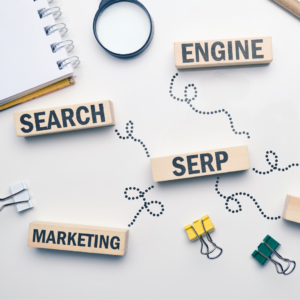Understanding Retail Analytics
What is retail analytics?
Retail analytics is the use of data analytics software to make precise and profitable decisions for retailers. Retail analytics is essential for gaining a competitive edge in the retail industry.
It involves collecting and analyzing data from physical, online, and catalog outlets to provide insights into customer behavior and shopping trends through customer segmentation through data analysis for retail.
The importance of data analytics in retail
Data analytics is crucial for retailers to understand their customers and business processes to boost productivity, reduce expenditure, and gain competitive advantage. Real-time data helps in making timely and accurate decisions. Retail analytics helps retailers make informed decisions about inventory levels, pricing, and product offerings.
Retail businesses leverage data analytics to enhance customer experiences and optimize operations, utilizing machine learning and artificial intelligence to understand customer behaviors and create hyper-personalized experiences. The retail industry has been significantly transformed by the adoption of data analytics, enabling retailers to make informed and data-driven decisions, leading to improved customer experiences and operational efficiencies.
Effective Data Analysis Strategies

Lean heavily on customer data for customer satisfaction
Customers provide a lot of explicit and implicit information about their desires and intentions. Customer segmentation helps in identifying trends and creating personalized experiences.
The best practitioners of retail analytics use that data to identify trends and better understand those customers. By leveraging data analytics to create personalized experiences, retailers can foster strong customer relationships and drive customer loyalty. Understanding customer data is crucial for gaining a competitive edge in the retail industry.
Use visualization tools for data analytics
Visualization tools such as charts, graphs, and dashboards are essential for data visualization, helping in understanding data and making informed decisions.
They are a much more effective way of taking information than simply staring at rows and columns of data. Visualization tools are indispensable for making informed decisions in the retail industry
Analyze multiple data sources
Analyzing multiple data sources, including sales data, historical customer data, and inventory data, can provide valuable insights into the business, offering a comprehensive view that aids in making data-driven decisions. Data integration helps in combining data from various sources to provide a comprehensive view. Analyzing multiple data sources is essential for gaining a holistic view of the retail industry.
It can help retailers correlate in-store analytics with merchandise attribute analytics to determine how to optimize the layout of a physical store.
Key Benefits of Data Analytics in Retail

Optimizing inventory management
Data analytics enables retailers to achieve inventory optimization by enhancing their inventory management processes.
By analyzing historical sales data, they can accurately forecast demand and align inventory levels accordingly. Demand forecasting helps in predicting customer demand, which ensures that inventory levels are aligned with the predicted demand, reducing overstock and stockouts. Effective inventory management is crucial for maintaining competitiveness in the retail industry.
Predictive analytics for sales forecasting
Predictive analytics helps retailers forecast future sales accurately. Machine learning is used in predictive analytics to analyze historical data and forecast future sales.
By analyzing historical data and considering various factors such as seasonality, promotions, and customer behavior, retailers can predict future sales with a high degree of accuracy. Accurate sales forecasting enables retailers to optimize inventory management processes, minimize carrying costs, and maximize profit margins. Predictive analytics is transforming the retail industry by enabling more accurate sales forecasting.
Improving marketing strategies
Customer segmentation allows retailers to gain deep insights into customer segments, behaviors, and preferences.
By understanding their target audience better, retailers can develop precise and effective marketing campaigns. Data analytics can be used to create targeted and personalized marketing campaigns, delivering personalised shopping experiences, optimising advertising spend, and enhancing customer satisfaction, ultimately driving revenue growth. Effective marketing strategies are essential for success in the competitive retail industry.
Establishing Measures for Retail Data Analytics

Setting goals and objectives
Retailers must set clear goals and objectives for their data analytics initiatives.
This includes defining what they want to achieve and how they will measure success. Setting clear goals and objectives helps in making informed and data-driven decisions, which is essential for success in the retail industry.
Defining key performance indicators (KPIs)
Retailers must define KPIs that are relevant to their business and goals. Real-time data helps in monitoring and measuring KPIs effectively.
Examples of KPIs include sales growth, customer satisfaction, and inventory turnover. Additionally, using retail analytics to optimize pricing can be a key performance indicator for retail businesses, helping them understand customer behaviors and make informed pricing decisions based on industry guidance. Defining relevant KPIs is essential for measuring success in the retail industry
Establishing data quality standards
Retailers must establish data quality standards to ensure that their data is accurate, complete, and consistent. Establishing data quality standards is crucial for maintaining competitiveness in the retail industry.
This includes implementing data validation and data cleansing processes.
Overcoming Challenges in Implementing Data Analytics

Data privacy and security concerns
As retailers collect and analyze vast amounts of customer data, ensuring data privacy and security is of utmost importance. Data governance helps in ensuring data privacy and security by establishing policies and procedures for managing data effectively. Ensuring data privacy and security is crucial for maintaining customer trust in the retail industry.
Retailers must comply with data protection regulations and implement robust security measures to safeguard customer information.
The need for skilled data analysts
Implementing data analytics requires a team of skilled data analysts who can effectively collect, analyze, and interpret data. Data literacy is crucial for effectively collecting, analyzing, and interpreting data. Having skilled data analysts is essential for leveraging data analytics in the retail industry.
Retailers can address this by investing in training programs for existing employees or partnering with external data analytics experts.
Best Practices for Retail Data Analytics
Using data to drive business decisions
Retailers must use data to make informed and data-driven decisions, rather than relying on intuition or anecdotal evidence.
This includes using data to inform decisions about pricing, inventory, and marketing. Additionally, data analytics can be used to optimize supply chain operations, improving efficiency and predicting demand. Using data to drive business decisions is essential for maintaining competitiveness in the retail industry.
Continuously monitoring and evaluating data
Retailers must continuously monitor and evaluate their data to ensure that it remains accurate and relevant. Real-time data helps in continuously monitoring and evaluating data to ensure accuracy and relevance. Continuously monitoring and evaluating data is essential for success in the retail industry.
This includes regularly reviewing KPIs and adjusting data analytics strategies as
Staying up-to-date with industry trends and advancements
Retailers must stay up-to-date with the latest industry trends and advancements in data analytics. Data integration helps in leveraging the latest advancements in data analytics by combining data from different sources to provide a comprehensive view. Staying up-to-date with industry trends and advancements is crucial for maintaining competitiveness in the retail industry.
This includes attending industry conferences, reading industry publications, and participating in online forums.
Getting Started with Retail Data Analytics
Building a data analytics team
Retailers must build a team of skilled data analysts who can effectively collect, analyze, and interpret data. Data literacy is crucial for building a team that can effectively collect, analyze, and interpret data. Building a skilled data analytics team is crucial for leveraging data analytics in the retail industry.
This includes hiring data analysts, data scientists, and other data professionals.
Selecting the right data analytics tools
Retailers must select the right data analytics tools for their business needs.
This includes choosing tools that can handle large volumes of data, provide advanced analytics capabilities, and offer data visualization features along with user-friendly interfaces. Selecting the right data analytics tools is essential for success in the retail industry.
Developing a data analytics strategy
Retailers must develop a data analytics strategy that aligns with their business goals and objectives. Data governance helps in defining what data to collect and how to use it. Developing a data analytics strategy is essential for success in the retail industry.
This includes defining what data to collect, how to analyze it, and how to use it to drive business decisions.
To Learn more, you can enrol to Off-Grid Data Analytic Courses titled “Excel Power Analytics: Mastering Data Insights“
To gain further insights, you have the option to register for the Off-Grid SkillsFuture Career Transition Programme, specifically the “(SCTP) Advanced Certificate In Digital Retail“.




